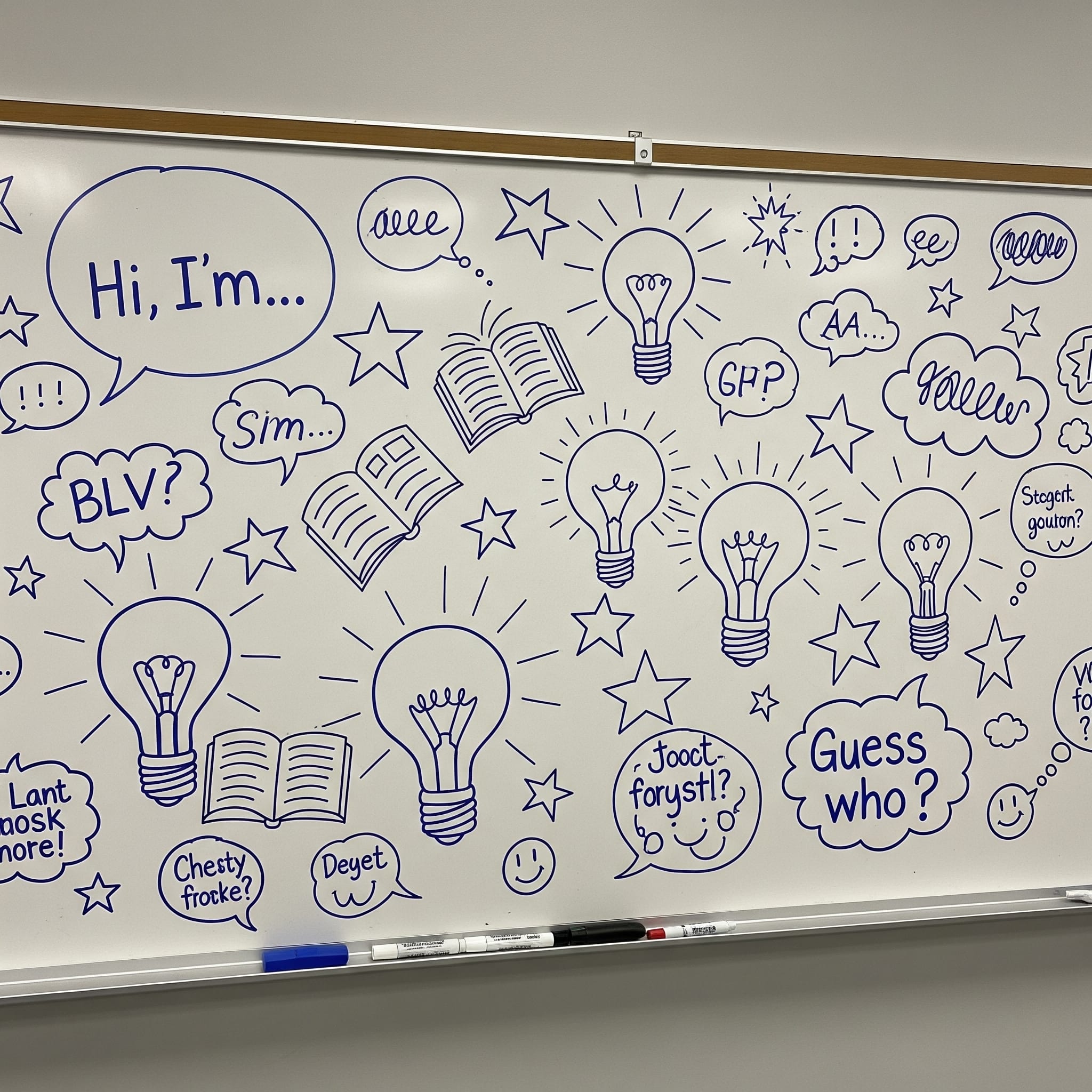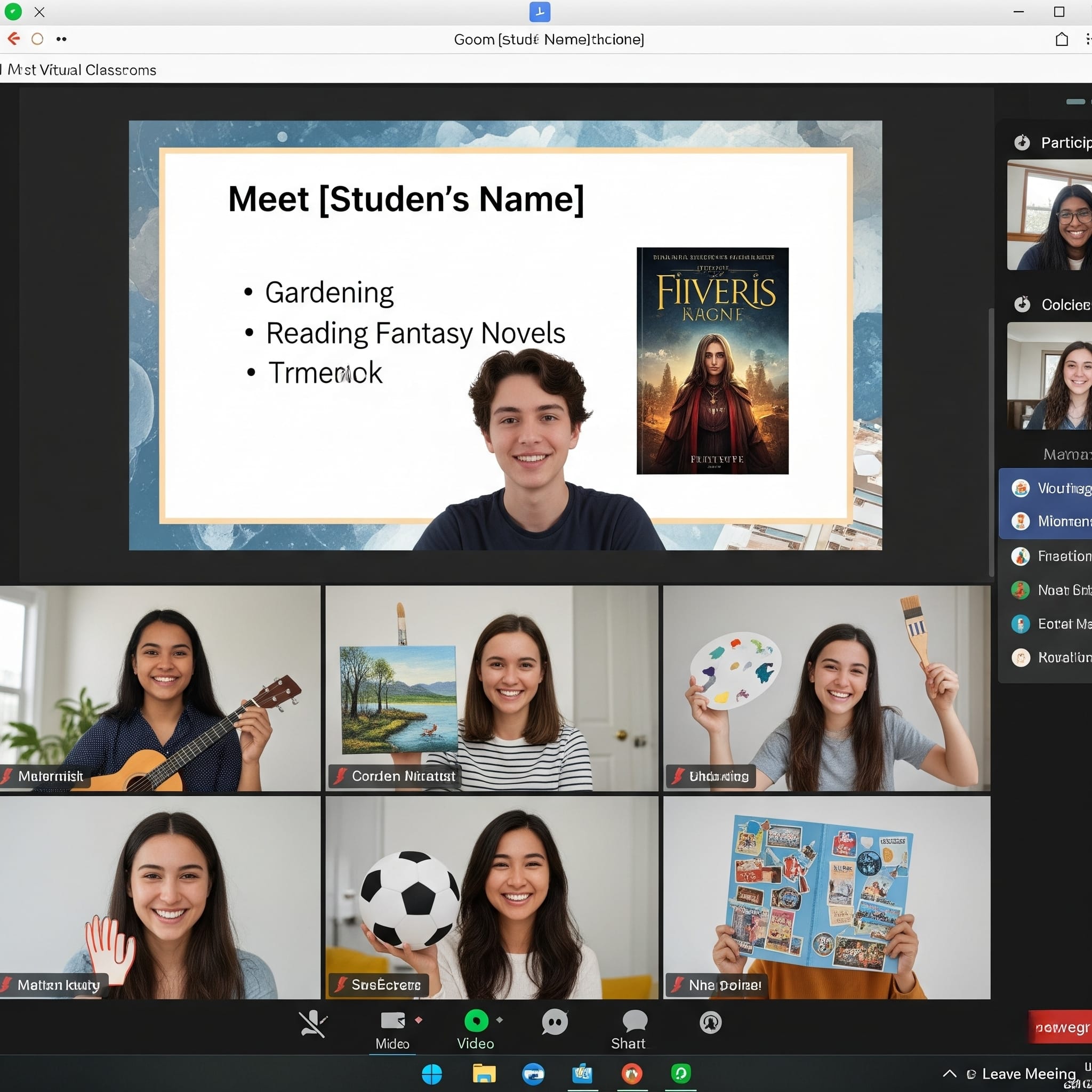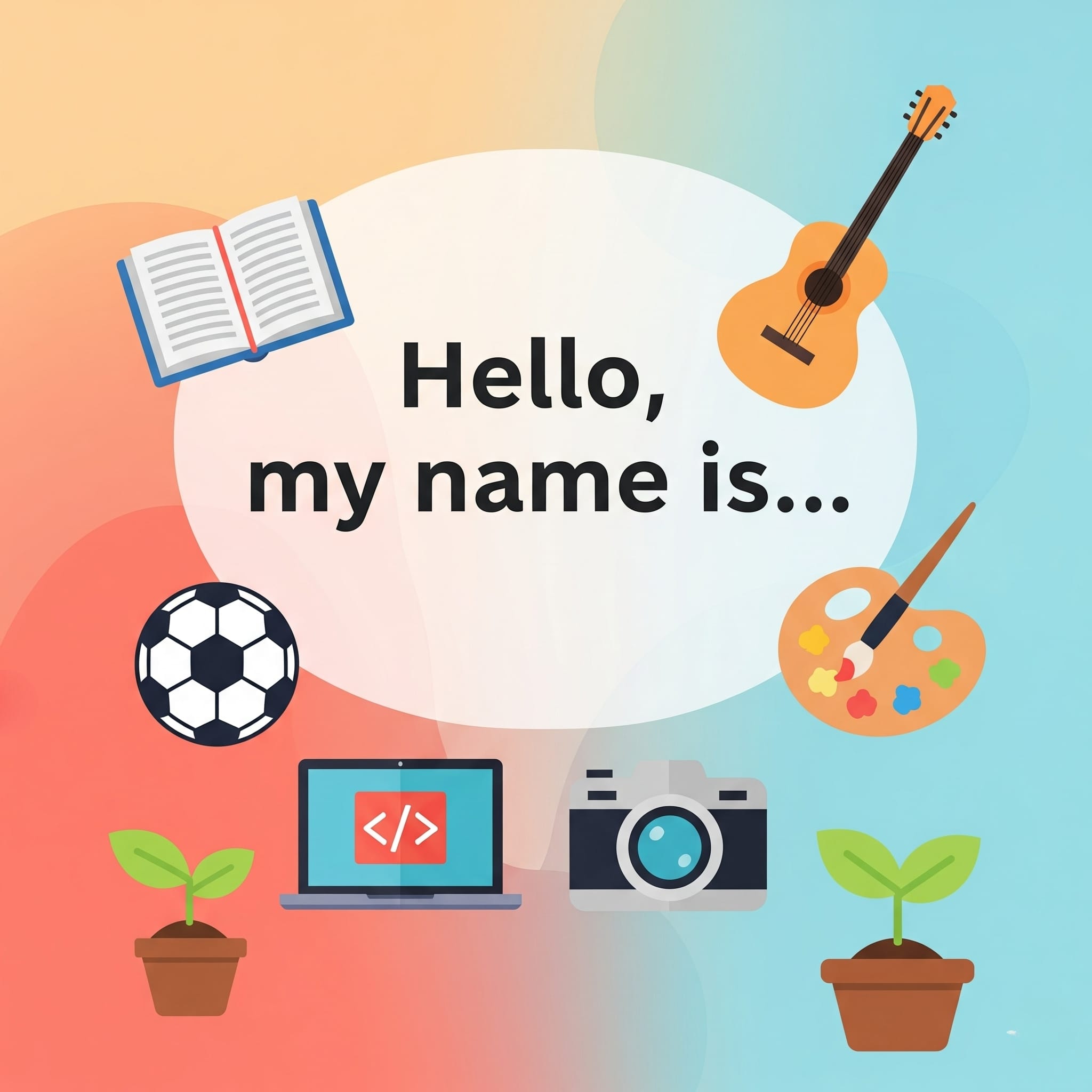Creative Self-Introduction Ideas for Students: Unique Introduction Examples & 5 Special Tips
Discover creative self-introduction ideas for students, with unique introduction examples, fun tips & tricks and FAQs to make your opening memorable and confident.

Greeting a classroom or virtual space can feel both exciting and nerve-wracking. What you say in your self-introduction can set the tone. A creative self-introduction does more than deliver facts about you, it captures attention, shows your personality, and opens the door to memorable connections.
Whether you’re starting a new school year, joining a club, taking part in a workshop, or presenting online, having unique introduction examples in your toolkit gives you confidence. In this guide, you'll find fresh ideas, real-world examples, and simple steps to personalize those opening moments.
By the end, you'll know how to craft a creative self-introduction that stands out, stays brief, and shows the best of who you are.
Why a Creative Self-Introduction Matters!
Grabs attention quickly
People tune into surprises. Instead of a plain “Hi, I’m Sam,” a creative twist invites curiosity.
Instead of “Hi, I’m Riya,” imagine saying, “I once won a quiz by answering a question about Harry Potter in three seconds flat.” See how much more engaging that sounds?
Builds rapport fast
Sharing a small personal detail or memory creates an instant connection. People feel closer when they learn something true and unexpected.Boosts your confidence
When you've practiced a unique intro, you step up with more energy and calm. It shows you’ve prepared and care.
At Clapingo, we’ve noticed students who practice with small stories feel calmer and more in control during real introductions.
Shows who you are
A creative intro lets your personality shine. Maybe you're witty, thoughtful, imaginative, or bold. The intro reveals that spark.Sets you apart
In a sea of names, a mini-story or visual hook makes your introduction stick.
Types of Creative Self-Introductions
There isn’t just one way to introduce yourself. Here are some styles you can try:
1. Story-Based Intro
Start with a short anecdote.
Example:
“Hi, I’m Maya. When I was five, I built my first rocket out of soda bottles and tape. That blast sparked my love for engineering.”
Why it works: You begin with a moment. People connect to a story faster than a list of details.
2. Question-Based Intro
Open with a playful question.
Example:
“Ever wondered what mangoes and Mondays have in common? I’m Ravi and I never skip breakfast or a chance to joke.”
Why it works: It engages the listener’s mind. You invite them to think.
3. Object-Based Intro
Use a prop or picture.
Example:
(holding a paintbrush)
“This brush reminds me how much I love mixing colors. I’m Aarushi, and I bring art into everything I do.”
Why it works: A prop adds a tactile or visual layer. It becomes more real.
4. Visual/Slide-Based Intro
Great for online classes.
Example:
(Slide shows a book, football, and camera)
“I’m Raj. I read, play, and create books, goals, and videos.”
Why it works: A custom visual to accompany your words makes a dual impression.
5. Quote or Poem Intro
Start with a line that inspires you.
Example:
“Not all those who wander are lost.’ That quote defines me. I’m Ananya, and I love exploring new places and ideas.”
Why it works: A literary touch shows reflection and style.
Check out our blog: Clapingo English Fluency for Professionals - Learn More Speak Softly, Speak Well: English Speaking Tips for Introverts

Creative Self Introductions In Classrooms
Unique Introduction Examples
Here are some ready-to-use templates you can adapt:
1. The Discovery Question
“Ever eaten ice cream during a monsoon storm? I have! I’m Dev, and I chase experiences as much as I chase good food.”
“Ever eaten a mango while riding in a rickshaw? I have! I’m Arun. I grew up in a busy Mumbai street where every day felt like an adventure. That curious, chaotic energy shaped my love for storytelling and film. I can’t wait to hear about your stories too.”
Why it’s unique: Combines culture, movement, food, and story. You’re not just sharing your name, you’re giving a mini-scene.
2. The Magic Object
(Holding a football keychain)
“This tiny football reminds me that small things can start big dreams. I’m Riya and I’ve been playing since I was six.”
(holds a keychain shaped like an airplane)
“Hi, I'm Sara. I keep this tiny airplane keychain as a reminder that even the smallest spark, like my first solo school trip, can ignite a lifelong passion for geography and travel. I’m looking forward to exploring with all of you!”
Why it’s unique: The airplane symbol and the short trip story makes it personal and memorable.
3. The Mini Poem
“Pages are my passport; stories are my journey.”
“I’m Sameer, a reader, writer and dreamer.”
(writes on board)
“Books are my map; pages, my path.”
“That’s my quick way in. I’m Akash, avid reader, map-lover, and dreamer. I see stories not just as tales, but as journeys. Let’s discover something new together.”
Why it’s unique: A poetic line creates imagery. It’s short, sweet, and captures a mindset.
4. The Two-Word Twist
“Curious. Playful. That’s me, Priya. I ask questions and skateboard in the same spirit, fast and fearless.”
OR
“Curious. Playful. I’m Nina. In class, I ask ‘why’ a lot. And on weekends, I chase waves on my skateboard. I’m here to ask smart questions and share big grins.”
Why it’s unique: Two adjectives, backed by action. You say less, but show more.
5. The Slide Snapshot
(Slide shows doodles of cats, puzzles, and movies)
“I’m Rahul. I love cats, math puzzles, and filmmaking. Together, they make me who I am.”
OR
“I’m Rahul. I love cats, math puzzles, and making short videos. That triad may sound odd, but that’s exactly who I am. Can’t wait to create and solve with all of you.”
Why it’s unique: A visual snapshot gives context fast. It's quirky and heartfelt.
Clapingo Insight: When our students rehearse these with tutors, they learn to add tone, pauses, and body language, turning simple words into powerful moments.
Mistakes to Avoid in Self-Introductions
Overloading with too much information.
Using clichés like “I’m very hardworking.”
Speaking too softly or too fast.
Clapingo Guidance: Tutors highlight these mistakes in real time, so students build awareness.
Check out our blog: Fluent in Any Setting: Learning English Beyond an English-Speaking Environment
Tips & Tricks for a Stand-Out Introduction
Tip | Why It Helps |
|---|---|
Start with a hook | A question, anecdote, prop, or mini-story grabs attention fast. |
Keep it short | 20–45 seconds is perfect. |
Keep it under 45 seconds | Short intros keep energy high and respect attention spans. |
Use simple words | Clear language keeps it easy to understand. |
Use sensory details | “The click of a skateboard wheel” feels richer and is more vivid than “I skate.” |
Practice aloud | Catch filler words and polish your tone. |
Practice but stay natural | Memorize structure, not every word, so you feel alive when speaking. |
Tailor to your audience | A class of younger kids gets a different tone than a high-school seminar. |
Smile & gesture | Your body reinforces your words. |
Be visually expressive | If possible, smile, gesture, or use a small prop, your body supports your words. |
Use your voice | Vary tone to show humor, excitement, or warmth. A flat tone can dull a great intro. |
End with an invite | “Can’t wait to hear your stories too.” builds rapport and shows warmth and eagerness. |
Clapingo Spotlight: In our live practice sessions, we encourage learners to record themselves. Watching your own delivery once is worth ten silent rehearsals.
Checklist Before You Introduce Yourself
Smile ✅
Speak slowly ✅
Don’t overload with details ✅
End with a positive vibe ✅
Clapingo Spotlight: Tutors give live feedback on this checklist during sessions.

Cultural Angle: How Introductions Differ Around the World
In India, mentioning family or hometown is common.
In the U.S., hobbies and passions come first.
Clapingo Insight: Exposure to global tutors helps students adapt to different cultural styles of introduction.
Humor in Self-Introductions
Why humor makes you instantly likeable?
Humour is one of the easiest ways to make people remember you. A small, light-hearted joke shows confidence and makes classmates feel relaxed around you.
Examples:
- “Hi, I’m Rahul, and yes, I’ve broken more cricket bats than records.”
- “Hi, I’m Ananya. People call me Google because I always have random facts.”
- “I’m Neha, and my talent is finishing Maggi noodles faster than anyone in this room.”
Clapingo Spotlight:Humour when done incorrectly can end up making a bad impression. Tutors help students balance humour without sounding forced.
In live sessions, our tutors guide students on how to use humor naturally without sounding forced. Many learners discover their unique sense of humor while practicing with us.
Clapingo Pro Tip: Keep humor short, clean, and relatable. Avoid inside jokes or anything that may embarrass someone else.
Body Language & Voice Tips
A great creative self-introduction is not only about words. The way you deliver them matters just as much.
Body Language Essentials:
Maintain eye contact (don’t stare, just glance comfortably at classmates).
Keep your hands relaxed, gestures should be open and natural.
Smile. It makes you approachable.
Stand tall, avoid slouching.
Voice Tips:
Speak slowly and clearly.
Avoid filler words like “umm,” “like,” or “basically.”
Add pauses for impact after your fun fact or story.
Clapingo Angle: Our tutors give feedback not only on English words but also on tone, clarity, and gestures. This makes your introduction feel polished and professional.
Creative Introductions for Different Age Groups
The style of self-introduction changes with age.
School Students: Focus on hobbies, favorite cartoons, or dream jobs.
“Hi, I’m Aditi, and my dream is to own a chocolate factory one day.
College Students: Talk about passions, skills, and career aspirations.
“Hi, I’m Arjun. I code apps for fun, and one day I hope to build something people around the world will use.”
Subject-Specific Introductions
Creative introductions can also reflect your academic interests.
Examples by field:
Science Student: “Hi, I’m Priya, and I once built a robot out of scrap parts, don’t worry, it’s friendly.”
Arts Student: “Hi, I’m Kabir, and I believe life is one big canvas. I just try to add more color.”
Sports Enthusiast: “Hi, I’m Rohan. I spend half my time on the cricket field and the other half explaining why cricket is better than football.”
Prop-Based Introductions
Props add instant visual interest.
Examples:
Holding a guitar:“This guitar has been my best friend for five years. Hi, I’m Aakash.”
Showing a camera:“I see the world through this lens. My name is Ria, and I love photography."
Displaying a book: “This book made me fall in love with history. Hi, I’m Nikhil.”
One-Line Introductions (Micro-Introductions)
Sometimes, you don’t have time for a long speech. Short and snappy intros can still make a big impact.
Examples:
“Hi, I’m Sara, and if coffee were a person, we’d be best friends.”
“Hi, I’m Kunal, and I can solve a Rubik’s cube in under 30 seconds.”
The more brief you are, the fluent and confident you across.
Did You Know?
- Stories are remembered 22 times more than facts.
- Props make speeches up to 60% more engaging.
- In many cultures, a creative intro is seen as a sign of respect. It shows you prepared for your audience.
The Power of Questions in Introductions
A question grabs attention instantly.
Examples:
“What’s the one food you can eat forever? For me, it’s Maggi. Hi, I’m Arjun.”
“Do you believe in destiny? I do, because it’s what brought me to this college. I’m Priya.”
Self-Introductions for First Day vs. Later Semesters
Your introduction should evolve as you grow.
First Day: Light and casual.
“Hi, I’m Neha. I love doodling in class (don’t tell the teacher).”Later Semesters: Deeper, showing growth.
“Hi, I’m Neha. Over the last semester, I worked on a project about AI, and I’d love to share what I learned.”

Creative Introductions for Online Classes
Virtual learning requires different tricks (props on camera, virtual backgrounds, creative slides).
Examples: Holding up a favorite book while introducing, changing Zoom background to represent your hobby.
Storytelling Intros: Turning Moments into Memorable Lines
One of the most powerful ways to introduce yourself is through storytelling. A short, engaging story grabs attention, makes people remember you, and instantly creates a personal connection. Instead of giving a list of facts, you share a slice of your life that reflects your personality.
Why Storytelling Works in Self-Introductions:
Memorable: People forget plain facts but remember stories.
Relatable: A story helps others connect with your experiences.
Engaging: It makes your introduction feel less like a speech and more like a conversation.
Examples of Storytelling Self-Introductions
“Hi, I’m Arjun. On my first day of school, I got lost and accidentally walked into the teachers’ lounge. Since then, I’ve always had an adventure finding my way but that’s also how I discovered I love exploring.”
“Hi, I’m Meera. Last summer, I tried baking a cake without following the recipe. It turned out horrible, but that’s how I learned I actually enjoy experimenting in the kitchen.”
“Hi, I’m Dev. I once missed my school bus because I was too busy sketching. That’s when I realized art is not just my hobby, it’s part of who I am.”
How to Structure a Story-Based Introduction
Hook: Start with a small, interesting moment.
Connection: Link the story to your personality, hobby, or strength.
Identity: End with your name so people remember you.
Formula Example:
“Once, [short story]. That’s when I realized [lesson/trait]. Hi, I’m [name].”
Bilingual Introductions: Mixing Cultures
Adding a touch of your native language makes your introduction unique and memorable.
Example:
“Namaste! I’m Aarav, and in English that means I greet you with respect.”
“Bonjour, I’m Meera. I’m learning French, so sometimes I mix it up in my intros.”
Self-Introduction for Group Work/Projects
When joining a project group, your introduction should show your strengths.
Examples:
“Hi, I’m Meera, and I love organizing, so you can count on me for deadlines.”
“I’m Ramesh. I enjoy public speaking, so I’ll be happy to present our group’s work.”
Icebreaker-Based Introductions
Another fun way to introduce yourself is by using icebreakers with quick, playful prompts that spark curiosity and make classmates smile. These are especially effective on the first day of school, in workshops, or group activities where everyone feels a little nervous. It is also a common way for introductions to take place in most settings. Ace your icebreaker game with these tips!
Why Icebreaker Introductions Work
They instantly make the atmosphere lighter.
They help you stand out without needing a long speech.
They encourage others to share, creating bonds faster.
Popular Icebreaker Ideas for Self-Introductions
Two Truths and a Lie
Example: “I’ve met Virat Kohli, I can juggle three oranges, and I hate pizza. Guess which one is the lie?”
Fun Fact About Me
Example: “Hi, I’m Ria. A fun fact about me is that I once finished an entire Harry Potter book in one night.”
If I Were…
Example: “If I were a superhero, I’d be Flash because I’m always running late. Hi, I’m Kunal.”
Would You Rather
Example: “Would you rather live without the internet or without chocolate? I’d pick the internet. Hi, I’m Sanjay.”
How to Deliver an Icebreaker Introduction
Keep it short and snappy.
Make sure it’s inclusive and fun (nothing too personal or sensitive).
End with your name to seal the memory.
Self-Introduction Templates (Fill-in-the-Blanks As Required)
Template 1: Fun Fact Style
“Hi, I’m [Name]. If I could eat only one food forever, it would be [food]. I also love [hobby].”
Template 2: Story Hook Style
“Hi, I’m [Name]. Once, [short funny/interesting story], and that’s how I got interested in [subject/hobby].”
Template 3: Goal-Oriented Style
“Hi, I’m [Name]. I want to [future goal], and right now I’m working on [skill/project].”
ClapingoSpotlight: Tutors can help refine these into polished introductions.

At Clapingo, we believe every student has a story worth telling. A creative self-introduction is your first step toward showing that story with confidence. A creative self-introduction is your chance to share it in a way that excites others and empowers you.
You’ve now seen multiple unique introduction examples, styles, and tips. The next step is simple: pick one, make it your own, and practice until it feels natural.
If you’re ready to take your introduction from “basic” to “brilliant,” book a Clapingo practice session today. We’ll help you refine your words, polish your tone, and make your presence unforgettable.
If you’d like expert guidance, Clapingo can help. Our tutors will refine your words, polish your delivery, and ensure your first impression is unforgettable.
Ready to craft your own creative self-introduction? Start with one of the templates. Try it out, tweak it and let it reflect who you are. Share your final intro with classmates or friends, ask for feedback, and see how it makes you feel.
Let’s make your introduction unforgettable!
Ready to craft your best self-introduction?
Book a practice session with Clapingo today. Together, we’ll turn your nervous “Hi…” into a confident, creative introduction that makes people remember you.
Hear from a Clapingo Learner:
Comments
Your comment has been submitted successfully!